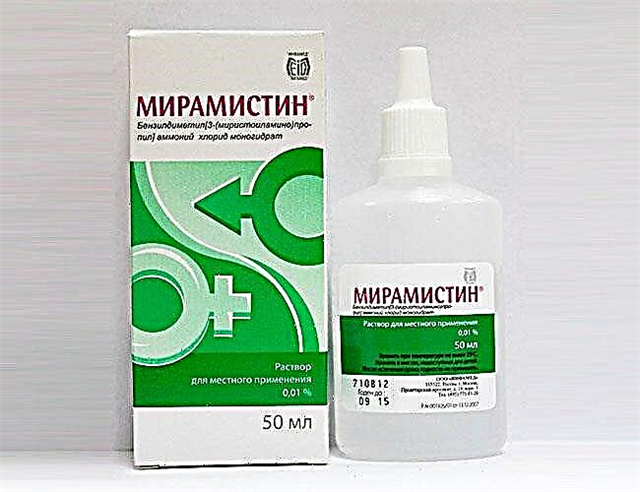
Sometimes parents complain about a seemingly unreasonable increase in the child's temperature. There are no signs of the onset of the disease, the baby is not worried about pain, and the thermometer stubbornly shows an increase in body temperature. There is always a reason for a rise in temperature, but it is not always obvious. And anyway high temperature in a baby should not be ignored by adults. You should learn as much as possible about hyperthermia and hyperthermic syndrome in order to know how to help a child in a given situation.

What it is?
Hyperthermic syndrome is called violation of thermoregulation (heat exchange) associated with an increase in body temperature. Fever invariably provokes a response from the internal organs and systems, while the heart, blood vessels and nervous system are most often affected. An increase in temperature above the natural rate (for infants, the norm is 37.0 degrees, for others - 36.6 degrees) indicates the transfer of the body to a state of heightened combat readiness.
Heat is a defense mechanism of the human body, which "turns on" every time it is necessary to mobilize immune forces to fight some harmful and dangerous factor. Fever is a healthy mechanism for fever in illness.
Hyperthermic syndrome is associated with an increase in temperature to 39.0 degrees and above, a violation of hemodynamics, signs of cerebral edema. Hyperthermia itself is an excessive accumulation of heat and the difficulty of its release outside. They say about hyperthermic syndrome when the child's condition is critical, threatening his life and health. The most common hyperthermia syndrome occurs in children aged from birth to six years. Almost never occurs in adolescents. If you do not provide the child with timely and correct assistance, everything can end in death, since the symptoms of the syndrome grow very quickly.
The most dangerous form is postoperative malignant hyperthermia.

Kinds
There are several main types of thermoregulation disorders in a child.
White (pale)
This is a less favorable and more dangerous form of hyperthermia. With it, heat transfer is impaired, the body produces more heat than it gives off. The skin remains pale and dry. Often the skin looks like marble, bluish streaks are noticeable, there is a slight cyanosis of the nail plates, lips, which indicates a violation of blood circulation. The baby's arms and legs stay cold despite the fact that the thermometer is literally shocking with its readings.
If it is easy to press on the skin with a finger, a white spot remains, this sign is called that - a sign of a white spot, and in case of pale fever it is positive. The child's consciousness is disturbed. He is lethargic, inactive, a delusional state, obsessive actions, and seizures are possible. Antipyretics practically do not work, they do not bring the desired relief.


Red (pink)
This is the most favorable form, in which the production of internal heat generally corresponds to heat transfer, due to which The baby's skin becomes red (pink) due to blood flow to the external blood vessels. With this form of hyperthermia, the baby's skin is hot, sweating increases (as one of the natural mechanisms of heat transfer), the arms and legs are hot, breathing becomes more frequent - this is also a mechanism for the release of excess heat that is dangerous for the state of the body.
The heartbeat becomes more frequent. In general, the child's behavior is not disturbed, he is conscious, although the thermometer can rise above 39.0 degrees.
Others
In newborns, due to the immaturity of the thermoregulation system, transient hyperthermia may develop. She is accompanied by insufficient work of the sweat glands, and therefore the transfer of heat is disturbed. The development of a pathological condition is facilitated by too warm clothing, a violation of the temperature regime in the room where the newborn is.
In children with a high level of anxiety, emotionally suffering, it is possible to develop neurogenic (psychogenic) hyperthermia, which manifests itself in long periods of elevated temperature for no apparent reason for its occurrence.

Causes
The reasons for the development of a state of hyperthermia are numerous. Among them are external - overheating in the sun, burns, heat stroke, as well as internal - painful conditions associated with excess heat production.
Young children, children suffering from dehydration, babies with weakened immunity are more susceptible to hyperthermia. Hyperthermic syndrome usually develops as an organism's overreaction to an infection (viruses, bacteria). This reaction differs from the normal one, in response to the release of heat by the body, the thermoregulation center, on the contrary, everything increases degrees, which leads to impaired blood circulation and a deterioration in the general condition. Experts believe that the tendency to hyperthermic syndrome can be genetically inherited.
Important! Malignant hyperthermia has hereditary causes, pathology develops as a reaction of the body with a mutation in the 19 pair of chromosomes to drugs that are administered during anesthesia for surgical operations.


First aid
For parents who are faced with an increased temperature in a child, the question naturally arises whether it is necessary to lower the temperature. Since heat is the body's defense mechanism, it is not worth bringing down the temperature insignificantly. If the child is generally healthy, then it is considered that there is no need to reduce the heat up to 38.5 degrees - immunity must have adequate conditions for the formation of antibodies that will actively resist the disease. It is the increased temperature that creates the most favorable conditions for the production of interferons.... But this rule applies only to red hyperthermia, if the child has a pale form, then help should be provided immediately, regardless of the specific numbers on the thermometer.
Children of the risk group also need help - premature babies, children of the first year of life, children who have previously suffered febrile seizures against the background of fever, babies with diseases of the central nervous system, chronic diseases of the heart and blood vessels. All parents should know the algorithm for providing emergency care to children with a high temperature.
- With white hyperthermia at the same time give the child an antipyretic and a vasodilator (paracetamol with "No-Shpa" or "Papaverine"). The room should be cool, the child is put to bed and an ambulance is called.
- With red hyperthermia give a single age dose of a paracetamol-based antipyretic agent. The child should be undressed to his underpants, if covered with something, then only a thin sheet so as not to disturb the heat transfer. You need to drink plenty of room temperature.
Call a doctor from the clinic at home, if we are talking about an infant with a fever of more than 39.0 degrees - it is wiser to call an ambulance.

Whether hospitalization is necessary for hyperthermia in children is a complex and controversial question. It is decided on an individual basis if the child's condition is recognized as serious. Clinical guidelines and standards for care at high temperatures determine several criteria for the severity of the condition - the baby's voice is weak, barely audible, the child whimpers monotonously, sobs, there are signs of white fever, there are signs of dehydration, the child is very lethargic, does not respond to external stimuli.
Urgent hospitalization is prescribed for the following symptoms:
- constant crying, hoarseness of the voice against the background of hyperthermia;
- sleep disturbance, in which the child either sleeps constantly or does not sleep at all for more than a day;
- pallor of the skin, its marble shade, cyanosis.
Important! The child will undoubtedly be taken to the hospital for a more detailed and thorough examination if there is no apparent reason for the increase in fever.
Treatment
When treating hyperthermia in children, categorically it is forbidden to use aspirin, it can cause the development of Ray's syndrome, which is dangerous for children's life. Modern standards also prohibit the use of Nise and analgin to lower the temperature in childhood.... Children of any age paracetamol-based antipyretics are recommended. With a red form, you can use anti-inflammatory "Ibuprofen", in white fever, its use is undesirable and ineffective.

Physical methods of cooling (wiping) are permissible only with the red form of hyperthermia. For this, the water is heated to such a temperature that it is one degree lower than body temperature. The technique has a very dubious effectiveness; doctors do not see anything particularly useful in it. And the use of cold water, alcohol and vodka in general can cause vasospasm, and the heat begins to leave the patient's body worse.
At a high temperature, if vomiting is noted, do not give antipyretic and anti-inflammatory drugs orally, use rectal suppositories. After taking such drugs, a decrease in temperature by at least half a degree is considered a positive result, and there is no need to take the medicine again. During treatment, it is very important that the child inhaled humidified air... To do this, you can use a humidifier or hang wet diapers around the house.
This, combined with plenty of drinking, is an excellent prevention of respiratory and pulmonary complications of hyperthermia associated with dehydration.




